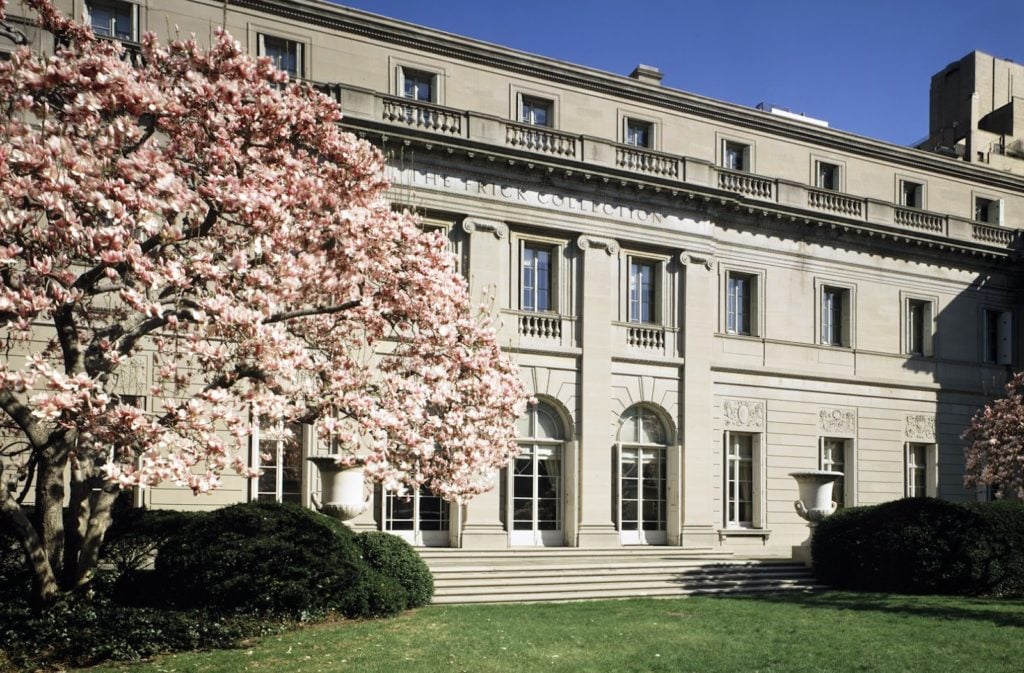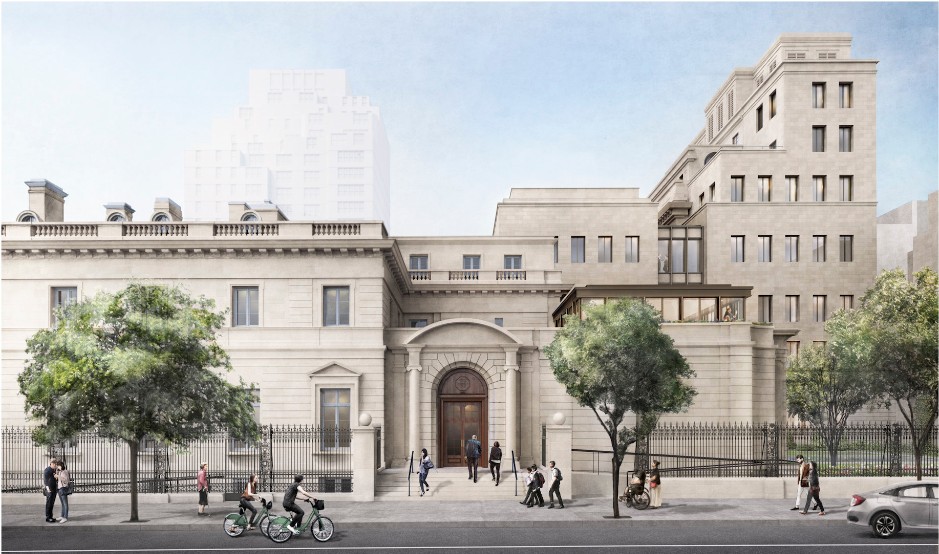Art World
A Verdict on the Frick Museum’s Future Is Delayed Yet Again, Despite a Marathon Public Hearing
Even after hours of deliberation, a vote on the landmark museum's expansion didn't happen.

Even after hours of deliberation, a vote on the landmark museum's expansion didn't happen.

Caroline Goldstein

On Tuesday morning, dozens of museum patrons, neighborhood advocates, and architectural enthusiasts turned up for a public hearing of the New York City Landmarks Preservation Committee to discuss the controversial future home of the Frick Collection.
The meeting, which included a presentation by architect Annabelle Selldorf and public testimonials both for and against a planned renovation and update, was expected to last just two hours. But not only did it last for more than twice that time—it also did not result in a decision on whether to grant the plan its “certificate of appropriateness.”

Rendering of The Frick Collection from 70th Street. Courtesy of Selldorf Architects.
The meeting was just the latest hitch in the museum’s Sisyphean attempts to modernize in recent years. Selldorf Architects has aimed to begin a two-year expansion project in 2020 at a cost of approximately $160 million. The design would add 60,000 square feet of repurposed space and 27,000 square feet of new building space.
But there have been many detractors who want to preserve the jewel-box landmark in its more historical form. Originally the mansion of steel magnate Henry Clay Frick, the building was updated some 15 years later by John Russell Pope, who converted the domicile into a public museum and added the Frick Art Reference Library. Further amendments came in 1977, when the much-beloved trompe l’oeil garden, designed by Russell Page, was installed along with small gallery spaces and a reception hall. A portico gallery was added in 2011 and, about every two to three years since, proposals have been submitted, pushed forward, and often denounced by members of the public.
Among those who testified on Tuesday in favor of the plan were Randall Goya, who worked for Selldorf Architects as the principal architect on New York’s Neue Galerie Museum before founding his eponymous firm; a representative reading a letter of support on behalf of Rebecca Robertson, the president of the Park Avenue Armory; Adam Roberts on behalf of the American Institute of Architects, Manhattan division; and David Martin, who read a letter of support for Paul B. Redman, the president of Longwood Gardens.
One outspoken opponent was Martha Frick Symington Sanger, the great-granddaughter of Henry Clay Frick and a historian on the collection, whose three-minute statement ended with enthusiastic applause. Her disapproval centered around what she referred to as an “ultramodern” cafe and gift shop with glass windows that would subject Frick visitors to visibility from the street. It would make museum-goers look like ants marching, she said. Speaking of ants, she added, a cafe would open up the delicate constitution of the collection to a variety of vermin.
For now, the plans remain in limbo. A representative for the Frick said that a public meeting will be scheduled for later in the summer, at which time the commissioners can pose clarifying questions to museum representatives.